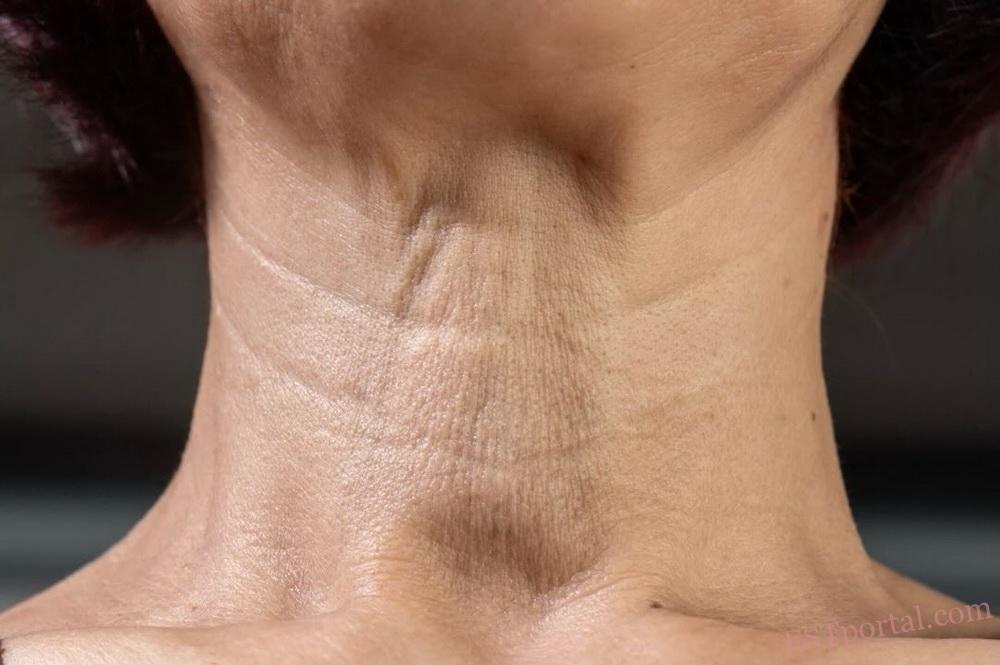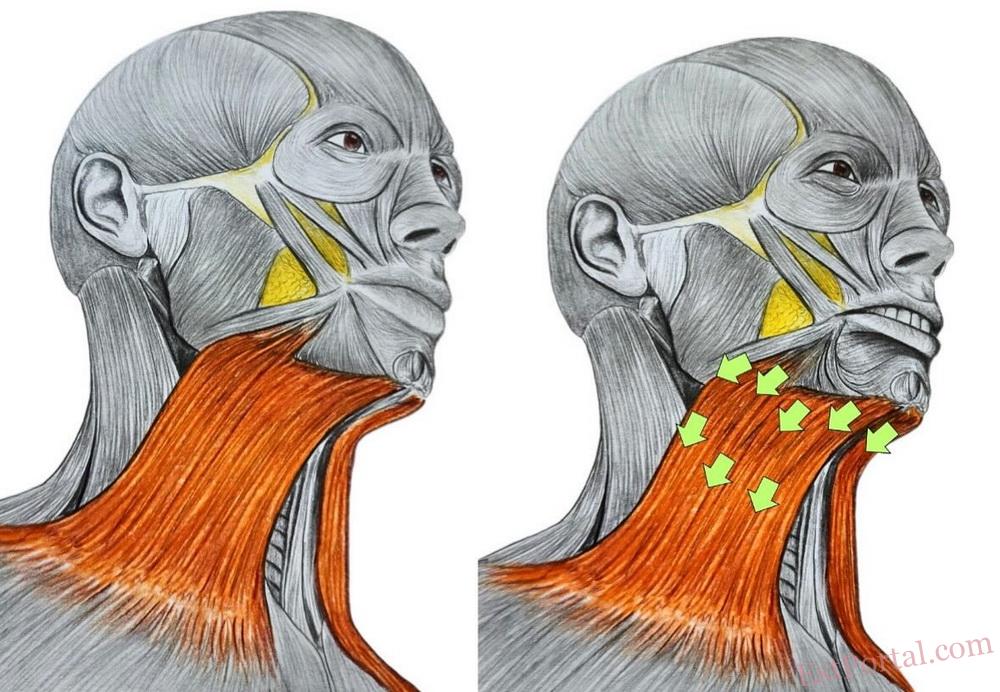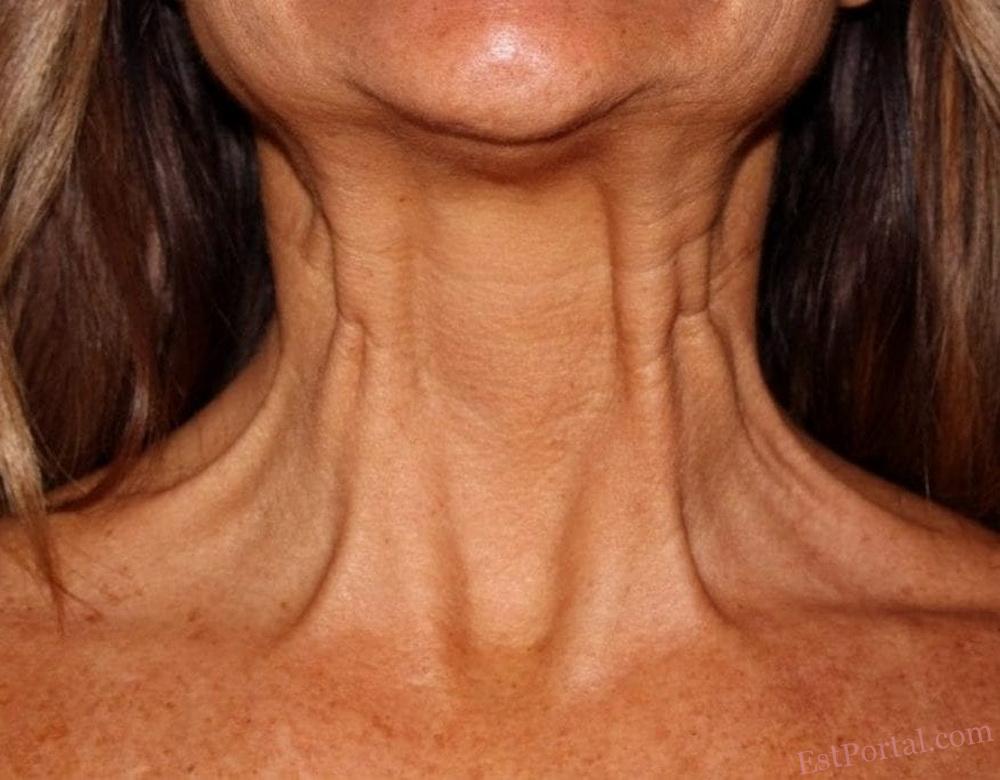
When Platysma Botulinum Therapy Triggers Neck Laxity: Clinical Insights
The neck is a delicate anatomical area that often reveals age first. This is due not only to its structural features but also to its hormone sensitivity. That’s why the neck not only reflects the actual age but may even make a person look older. This zone requires special — and most importantly, regular — care and correction.
Injectable neck correction often seems simpler than facial treatments. But in reality, it hides more clinical nuances than expected. Especially when it comes to platysma band botulinum therapy.
It seems straightforward: relax the muscle, eliminate the bands — and after 14 days, enjoy a smooth, calm neck. But in practice, some patients return with an unexpected effect: instead of tightness — there is laxity, sagging, and loss of definition.
Why does this happen? After all, botulinum toxin targets precisely. Let’s explore what exactly leads to this result — and how to avoid it in clinical practice.
Platysma: What Should Be Considered
The platysma (musculus platysma) is a thin yet active superficial neck muscle that extends from the lower jaw to the clavicles, partially continuing into the muscles of the lower third of the face. The platysma is involved in facial expression, pulls the skin downward, and directly affects the appearance of the neck and facial contour.
At a young age, its activity is almost unnoticeable. However, after the age of 35–40, as the skin loses density, the subcutaneous fat layer diminishes, and the muscle itself begins to contract unevenly, characteristic vertical bands form. These bands are often the main reason patients consult a specialist: “Please do something about my neck.”
At first glance, prescribing botulinum therapy seems straightforward: botulinum toxin blocks neuromuscular transmission, the muscle relaxes, the bands disappear, and the neck appears softer. Yet in some cases, the result turns out to be the opposite. Why is that?
Why Do the Bands Disappear After Botulinum Therapy, but Laxity Appears?
There are several explanations, all of which are quite logical — if you understand how the platysma works and what happens to the tissues once it relaxes.
1. The muscle was relaxed — the skin lost its support
In many patients, the platysma is the only remaining active muscular support of the neck. Once relaxed, tension is lost, and the skin begins to sag. If the skin was already thin, had low turgor, or a deficiency of subcutaneous fat, the laxity effect will be even more noticeable.
The botulinum toxin is not to blame. It simply did its job. The tissues just couldn’t handle the “freedom.”
2. The Platysma Masked the True Condition of the Skin
Before botulinum therapy, both the patient and the aesthetic practitioner focus on the bands — as they appear to be the main aesthetic flaw. But once they are eliminated, the real picture becomes visible: dry, thin, fibrotic skin with wrinkles and hypotonia. This is not a side effect, but a manifestation of what was previously hidden by the active platysma.
3. Technique Errors
The platysma is an anatomically thin and asymmetrical muscle. An excessive dose or inaccurate injection points can result in blocking not only the bands, but also fibers responsible for supporting the lower third of the face. The result: blurred contours, loss of neck-chin angle definition, and deepening of tissue laxity. This is especially relevant in older patients with already compromised tissue support structures.
When Platysma Botulinum Therapy Is Truly Indicated — and When It’s Best Left Alone
The neck area has a complex anatomical structure, where muscles, skin, subcutaneous fat, ligaments, and the lymphatic system function as a single integrated unit. Therefore, the decision to perform botulinum therapy on platysma bands should not be based simply on “bands present — inject,” but rather on a thorough evaluation of tissue potential.
Indications:
- age 35–50;
- active platysma with clearly defined bands;
- preserved skin turgor;
- no significant tissue atrophy or excess fat;
- stable contour of the lower third of the face.
With caution:
- age 50+, especially with signs of gravitational ptosis;
- reduced skin density;
- weakened ligamentous–adipose support in the lower third of the face that can no longer maintain independent support.
Not as monotherapy:
- generalized laxity and tissue hypotrophy;
- volume loss in the lower third of the face;
- when platysma is a secondary compensation rather than the primary cause of the defect;
- cases where relaxing the muscle would result in complete neck “collapse.”
The Main Mistake — Monotherapy
Relaxing the platysma without supporting the skin, volume, or structural tissues may result in the loss of the last remaining support. And this is often what causes the visual “worsening” that brings patients back to the clinic.
Botulinum toxin doesn’t create problems — but it can reveal them. And then the practitioner must go beyond simply “removing bands” to managing the consequences of underestimated tissue potential.
How to Avoid Neck Laxity After Botulinum Therapy: A Clinical Approach
The problem is not always in the platysma. And the solution is not always botulinum therapy. The focus should not be solely on the bands, but on the entire system of tissue interaction: the condition of the skin, subcutaneous fat, elasticity, turgor, presence of fibrosis, or age-related changes. If the tissues cannot cope — even a technically flawless procedure may lead to the opposite effect.
If the neck has already lost density, botulinum toxin should not be the only tool. In such cases, it must be used only in combination with:
- Biorevitalization — for hydration, improved turgor, and stimulation of hydrodynamics;
- Ultrasound SMAS-lifting or microfocused RF — for structural lifting and collagen stimulation;
- Fillers or biostimulators — in case of volume loss or diminished structural support;
- Enzyme therapy — for fibrosis, poor elasticity, or impaired diffusion;
- Agents with prolonged collagen-stimulating effects — to restore the tissue framework.
In other words, if you want the neck not to “collapse” after botulinum toxin — you must first provide it with sufficient resources. Only then should you relax the muscle and proceed with the therapy.
Conclusions
Platysma botulinum therapy is an effective method for correcting muscular bands in the neck area when patients are properly selected, dosage is precise, and an anatomically sound approach is used. In patients with good skin condition, preserved turgor, and no significant tissue atrophy, the procedure can yield a noticeable aesthetic result.
However, in cases of thin, lax, or fibrotic skin, the risk of aesthetic deterioration significantly increases. Excessive relaxation of the platysma in the absence of sufficient support from other tissue structures can lead to loss of contour definition, increased visual laxity, and disruption of the cervico-mental angle harmony.
The neck area does not tolerate one-size-fits-all solutions. Its correction requires a comprehensive analysis of the morphofunctional condition of the tissues, an understanding of age-related changes, and careful prediction of how the skin will respond to reduced muscle activity.
The key clinical question is not only the presence of bands, but whether the tissue system is ready to support the skin after their elimination. Successful platysma botulinum therapy is not an isolated intervention, but part of a multi-layered strategy for improving the neck area. This approach ensures not just a temporary smoothing effect, but a lasting and harmonious result.
Nataliya CHAYKA – Editor of ESTportal, Aesthetic Doctor












